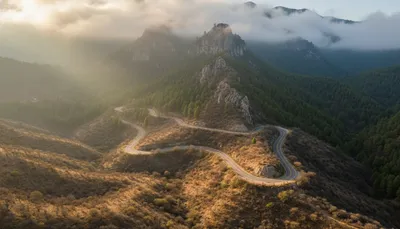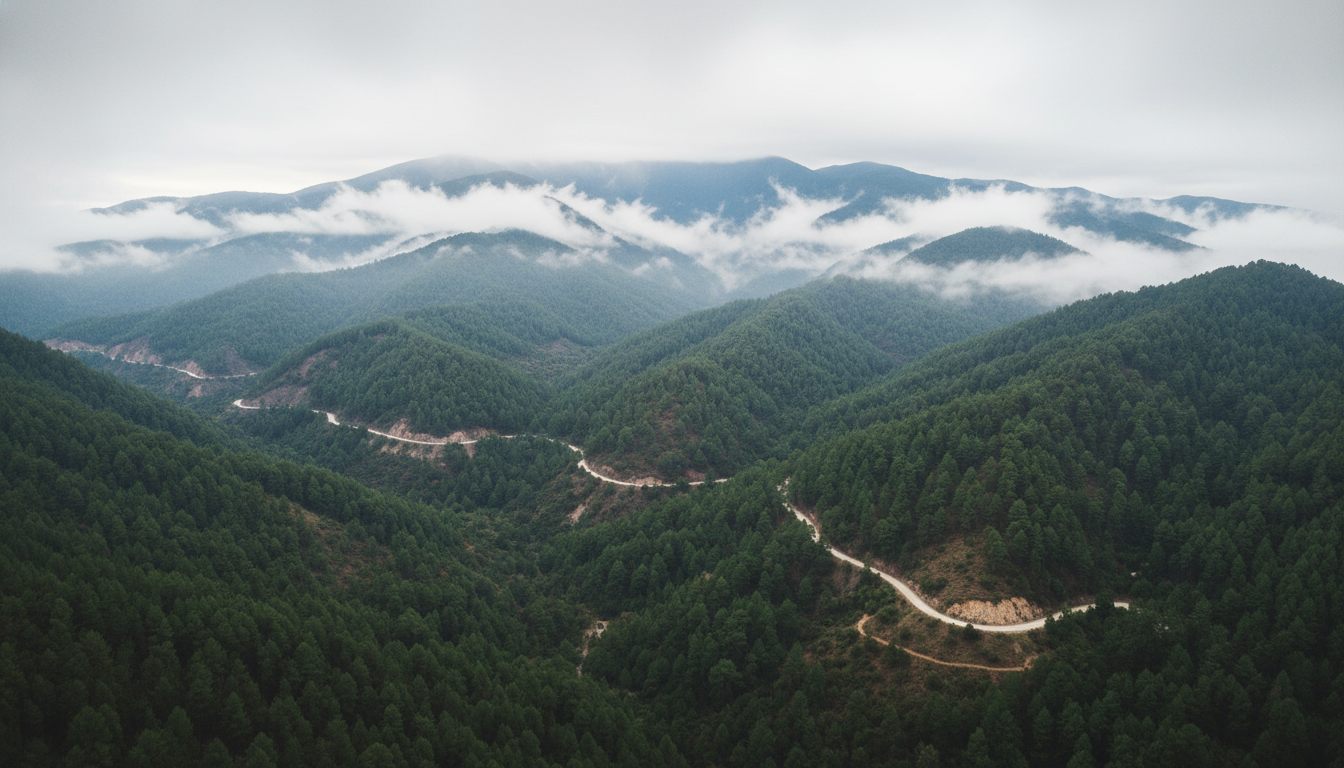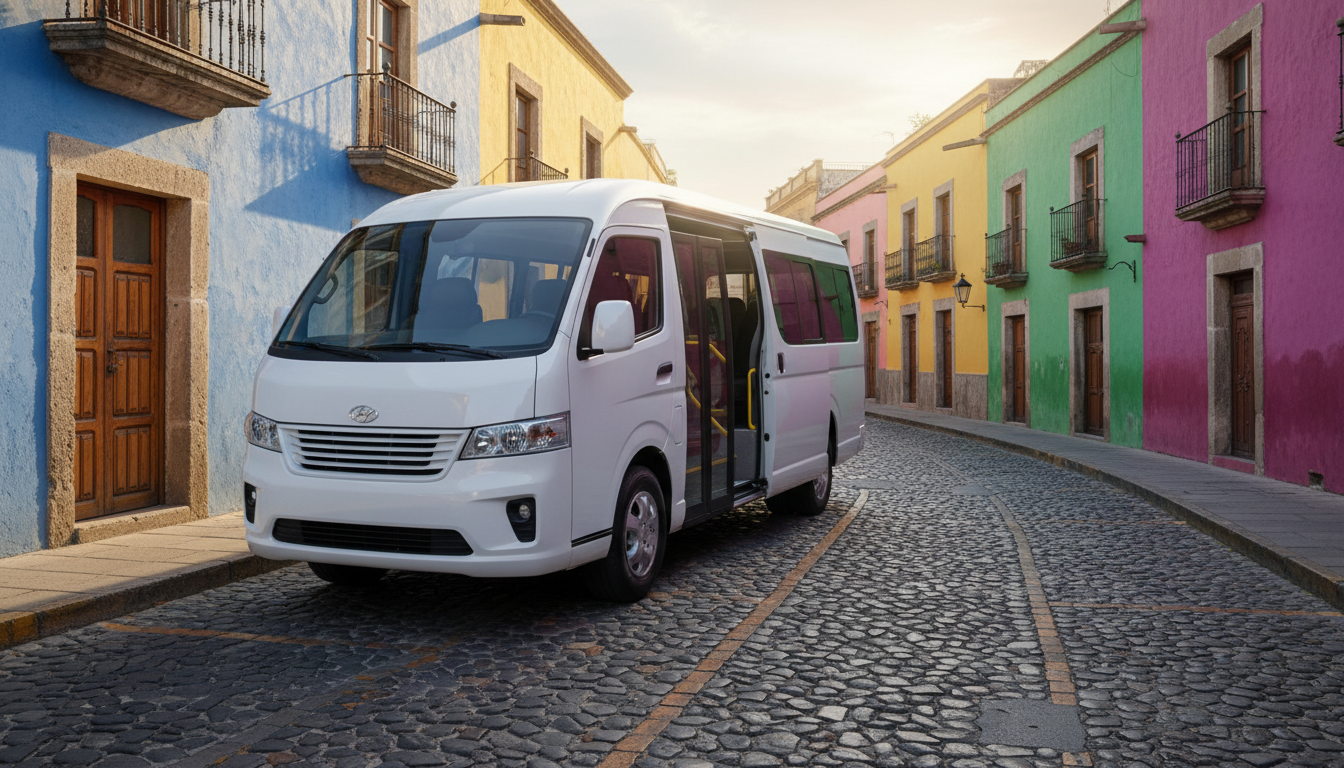
How to Get to the Pueblos Mancomunados from Oaxaca City
Section 1: Introduction
Getting to the Pueblos Mancomunados is part of the adventure. In just about 90 minutes, you leave the dry heat of the Oaxaca Valley and climb over 3,000 meters into cool, mist-covered pine forests. The air changes completely, and the noise of the city fades away.
However, the Sierra Norte is vast. The logistics follow a “hub and spoke” model. Your transportation method depends entirely on which village you plan to visit first. Taking the wrong highway can cost you hours of travel time.
While the official “Expediciones Sierra Norte” office in the city center can organize everything, nimble travelers often prefer the DIY approach. Taking a local colectivo (shared taxi) or driving yourself is significantly cheaper and offers more freedom. This guide breaks down every option so you can reach the cloud forest safely and on budget.
Note: For a comprehensive overview of the trails once you arrive, treat this article as the logistical companion to our Ultimate Guide to Hiking the Pueblos Mancomunados.
The Easiest Option: Expediciones Sierra Norte Shuttle

If you want a low-stress experience and don’t mind paying a premium, usage the official transport coordinated by the community office. The Expediciones Sierra Norte headquarters is located at Calle Manuel Bravo 210 (Interior) in Centro.
This is the most reliable option for travelers who are nervous about navigating local transit. However, there is a misconception that this is a cheap “bus” service. It isn’t. According to reviews on TripAdvisor, unless you are on a specific group tour, the office essentially arranges a private transfer for you.
What you need to know:
- Availability: You cannot just walk in and hop on a van. Unlike the frequent shuttles to Monte Albán, these transfers must be booked at least 24 hours in advance. The office has to call drivers down from the mountains to pick you up; there is no fleet waiting outside.
- Cost: Expect to pay between $900 and $1,500 MXN for a one-way trip, depending on the village. This is significantly more expensive than public transit, but it is door-to-door service.
Planning a multi-day trek? This shuttle is often the best way to start the extensive routes detailed in our Ultimate Guide to Hiking the Pueblos Mancomunados.
Public Transportation: Colectivos & Buses

For independent hikers, public transportation is the true Oaxacan experience. To avoid getting lost, you must understand that the villages are split between two different major highways.
How to Get to Cuajimoloyas & Benito Juárez (Hub 1)
These two villages are the most popular entry points and are accessed via Highway 190 (the road to Mitla).
The Direct Route (Taxi/Colectivo) You need to find the specific “Sitio” (taxi stand) for Cuajimoloyas. Travelers on TripAdvisor forums confirm these are Maroon and White (or sometimes Yellow) vehicles. They are located near the Central de Abastos market.
- Safety Warning: The Central de Abastos is chaotic and can be unsafe for tourists carrying heavy backpacks. Do not wander aimlessly. Head specifically toward the Monumento a la Madre or the Bodega Aurrera side of the Periférico to find the stand.
- Budget Option: If you prefer a bus, look for “Autobuses Halcón” near the bus yard at the Abastos. They usually leave around 10:00 AM. It is slower, but cheaper.
The “Tlacolula Hack” If the Central de Abastos feels too intimidating or the direct taxi is full, use this local trick:
- Take a standard colectivo or bus from the Baseball Stadium in Oaxaca City to Tlacolula (approx. 25-30 pesos).
- Get off in the center of Tlacolula.
- Find the local camionetas or mountain taxis that run specifically up to Cuajimoloyas from there. There are more frequent departures from Tlacolula than from Oaxaca City.
Once you arrive, consult our Cuajimoloyas Travel Guide for trail maps, or prepare for the adrenaline rush of the next town by reading our guide on Braving the Benito Juárez Suspension Bridge.
How to Get to Latuvi & Lachatao (Hub 2)
This is where many travelers make a mistake. Latuvi and Lachatao are accessed via Highway 175 (the road toward Ixtlán and Guelatao). If you take a taxi to Tlacolula/Cuajimoloyas, you will be on the wrong side of the mountain range.
Departure Point Shared taxis for this route depart near the Monumento a Juárez, located at the intersection of Highway 190 and Highway 175. This is distinct from the Zocalo or the Abastos.
The Community Bus According to Lachatao’s tourism page, there is a specific community bus. It typically leaves Oaxaca City near the Monumento a Juárez in the late afternoon (around 4:00 PM or 5:00 PM) on weekdays. Because schedules change on market days, you should verify by calling +52 951 515 8232.
Expert Tip: It is often easier to find transport to Latuvi than to Lachatao. A great strategy is to take a taxi to the Centro Ecoturístico Cabañas Latuvi and then hike the historic “Camino Real” to Lachatao. It takes 2-3 hours and saves you the headache of waiting for the Lachatao-specific bus.
This route drops you close to the historical sites mentioned in our Santa Catarina Lachatao Guide.
Private Transport: Taxis and Drivers

You can hail a standard yellow street taxi in Oaxaca City to take you up, but there are strict rules to follow to ensure you aren’t stranded.
- Negotiate First: Drivers will not use the taxímetro (meter) for this trip. You must agree on a flat rate before you get in. Expect to pay $800 - $1,200 MXN depending on your negotiation skills.
- The “No Cell Service” Reality: As noted in connectivity discussions, signals disappear once you pass Teotitlán del Valle. You cannot use DiDi or Uber to get back down.
- The Return Strategy: If you want the same driver to bring you back, pay 50% up front and 50% upon return. Set a firm meeting time and location—ideally the “Oficina de Ecoturismo” in the village—so both parties know exactly where to meet.
Driving Yourself: Road Conditions & Tips

Driving offers the most flexibility, but the mountain roads demand respect.
- The Route: Take Highway 190 East. Turn left at the intersection for Teotitlán del Valle / Díaz Ordaz. From there, the road climbs steeply.
- The Fog: The area is called the “Cloud Forest” for a reason. Visibility often drops to less than 10 meters after 2:00 PM. It is highly recommended to drive up in the morning (before 11:00 AM) to avoid white-knuckle driving in the mist.
- Vehicle Choice: A standard sedan is fine for the paved road to Cuajimoloyas. However, if you plan to drive on the dirt roads between villages (like the route to Benito Juárez), an SUV or High Clearance vehicle is required, especially during the rainy season (June to September).
What to Know Before You Go (Logistics)

Before you leave the city, make sure you have these three essentials handled.
- Cash is King: There are no ATMs in the mountains. The Sierra Norte official FAQ is clear on this. Bring small bills ($20s, $50s, and $100s). Drivers and small village stores typically cannot break a $500 peso note.
- Motion Sickness: The road ascends over 1,000 meters very quickly with constant switchbacks. If you are prone to car sickness, take Dramamine 30 minutes before you leave your hotel.
- Community Fees: Upon arrival, proceed immediately to the Ecotourism Office. Even if you are not hiring a guide, you usually need to pay a small entry fee ($50-$100 MXN). This money supports the community’s conservation efforts.
Conclusion
The roads to the Pueblos Mancomunados are twisty and steep, but they lead to one of the most pristine environments in Mexico. Whether you splurge on a private driver or navigate the colectivos like a local, the journey is worth the effort.
Choose your first village based on your budget and comfort level, and get ready for the fresh mountain air.
- Planning your route? Now that you know how to get there, map your itinerary with our Ultimate Guide to Hiking the Pueblos Mancomunados.
- Hungry after the ride? Warm up with the Traditional Sopa de Hongos Recipe you’ll typically find simmering in the mountain kitchens.